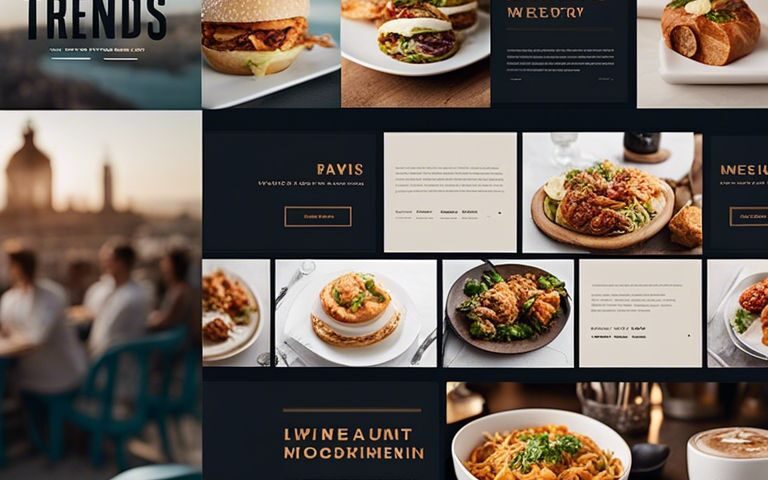The Complete Guide To Restaurant Website Design Trends

The Benefits Of Hiring Freelance Web Designers For Your Project
April 18, 2024
Why Partner With A Web Development Agency For Your Website Project?
April 22, 2024This comprehensive guide will provide restaurateurs with the latest insights and strategies to elevate their online presence through innovative website design trends. In today’s competitive digital landscape, a well-designed website is crucial for attracting and retaining customers. From mobile responsiveness to visually appealing layouts, we will probe into the most important and effective design trends that can help restaurants stand out and increase their online visibility. Stay ahead of the curve and learn how to create a website that not only looks great but also drives traffic and boosts your business’s success.
Key Takeaways:
- Mobile responsiveness is crucial: Ensure your restaurant website is optimized for mobile devices to provide a seamless user experience.
- Visual elements are necessary: Utilize high-quality images and videos to showcase your restaurant’s ambiance, food, and menu offerings.
- User-friendly navigation is key: Make it easy for visitors to find important information such as menu, reservations, and contact details on your website.
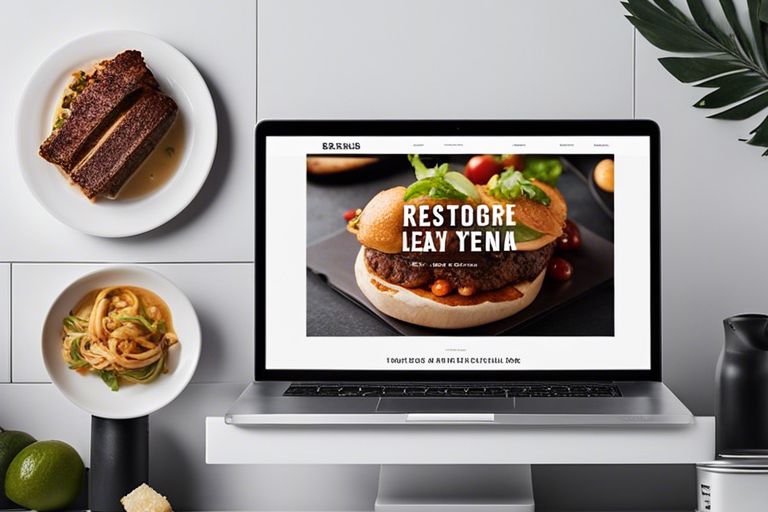
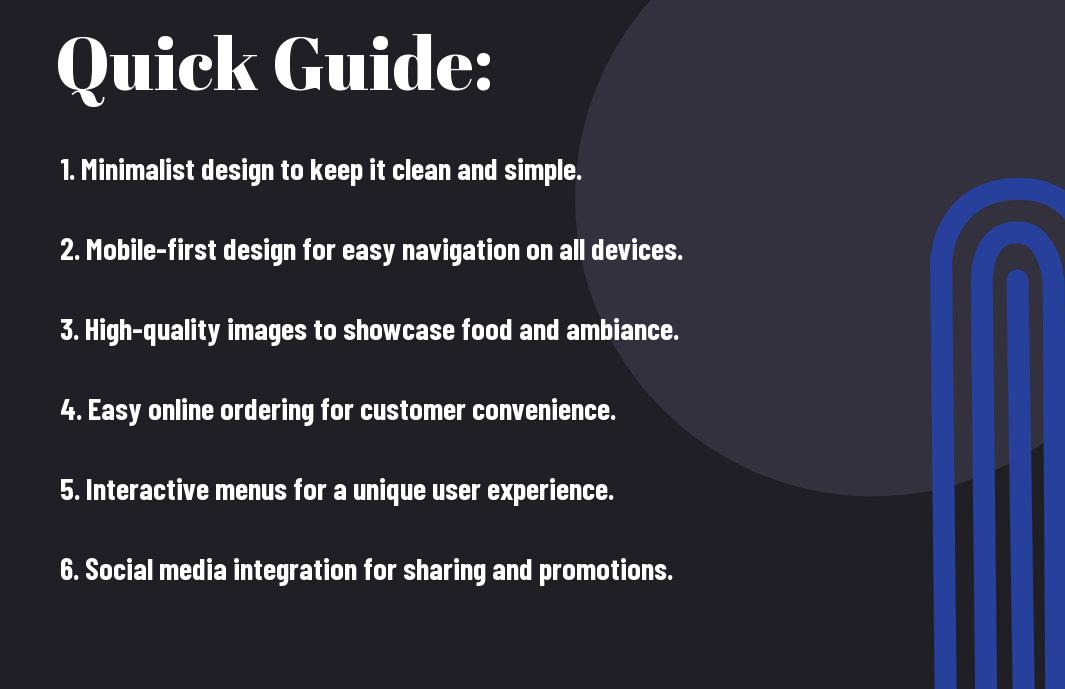
Types of Restaurant Website Designs
Some of the types of restaurant website designs that are gaining popularity include:
- Single Page vs. Multi-Page Layouts
- Thematic Design Trends: Modern, Vintage, and Artisanal
- Interactive and User-Friendly Designs
- Mobile-First and Responsive Designs
- Minimalistic and Clean Designs
Assume that choosing the right design for your restaurant website can greatly impact your online presence and user experience.
Single Page vs. Multi-Page Layouts
Little debate exists over whether single page or multi-page layouts work best for restaurants. Single-page websites are great for concise information presentation, but multi-page layouts offer more options for SEO and content organization.
Thematic Design Trends: Modern, Vintage, and Artisanal
Layouts inspired by modern, vintage, and artisanal themes are popular among restaurant websites. Modern designs often feature sleek surfaces and bold colors, while vintage designs evoke a sense of nostalgia with classic fonts and imagery. Artisanal designs emphasize craftsmanship and authenticity, appealing to audiences seeking unique dining experiences.
| Modern | Vintage |
| Clean lines | Classic fonts |
| Bold colors | Nostalgic imagery |
| Minimalistic | Retro elements |
| Sleek surfaces | Timeless appeal |
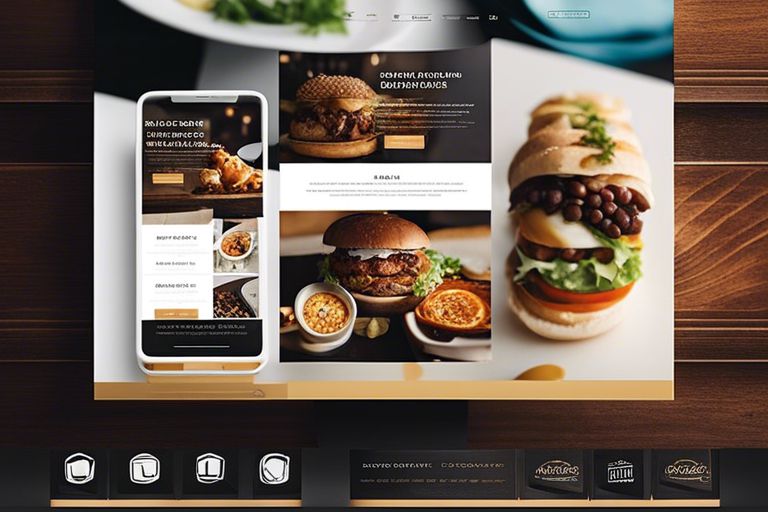
Step-by-Step Guide to Designing Your Restaurant Website
After reading The Complete Guide to Restaurant Websites, you are ready to start designing your own restaurant website. Follow this step-by-step guide to create a visually appealing and functional website that will attract customers and showcase your brand.
| Defining Your Brand Identity | Creating a User-Friendly Interface |
Defining Your Brand Identity
Defining your brand identity is crucial for creating a cohesive and memorable online presence for your restaurant. Consider your restaurant’s unique selling points, target audience, and overall vibe. Use colors, fonts, and imagery that reflect your brand personality and set you apart from competitors.
Creating a User-Friendly Interface
To create a user-friendly interface, focus on your website’s navigation, layout, and functionality. Make sure customers can easily find necessary information such as your menu, location, hours of operation, and contact details. Incorporate intuitive design elements like clear call-to-action buttons, mobile responsiveness, and quick loading times to enhance the user experience.
Designing a restaurant website that reflects your brand identity and offers a user-friendly interface is crucial for attracting and retaining customers. By defining your brand identity and creating a user-friendly interface, you can effectively communicate your restaurant’s image and make it easy for visitors to navigate your site.
Tips for Enhancing Your Restaurant Website
Unlike traditional marketing methods, a well-designed restaurant website can attract and engage customers effectively. To ensure your website stands out from the competition, follow these key tips:
- Incorporating High-Quality Images and Videos: Your website should showcase high-quality images and videos of your restaurant’s ambiance, dishes, and staff. Visual content can create a strong impression on visitors and entice them to dine at your establishment. Make sure to invest in professional photography and videography to capture the essence of your brand.
- Implementing Mobile Responsiveness and SEO Best Practices: Practices
Incorporating High-Quality Images and Videos
Your website should showcase high-quality images and videos that highlight the unique features of your restaurant, such as signature dishes, cozy interiors, and happy customers enjoying their meals. Visual content plays a crucial role in attracting and engaging visitors, setting the right expectations, and encouraging them to visit your restaurant in person.
Implementing Mobile Responsiveness and SEO Best Practices
Practices
Understanding mobile responsiveness and SEO best practices is crucial for ensuring your restaurant website ranks well in search engine results and provides a seamless browsing experience across all devices. Mobile-friendly design and SEO optimization can drive organic traffic, improve user engagement, and ultimately lead to more reservations and orders for your restaurant. Prioritize responsive web design, keyword optimization, fast loading speeds, and local SEO strategies to enhance your online visibility and attract potential customers.
Factors to Consider When Choosing Design Elements
Despite many different design elements available for restaurant websites, it’s crucial to consider a few key factors to ensure your website is effective and user-friendly. By focusing on user experience, brand identity, and mobile responsiveness, you can create a website that caters to your target audience and drives more business.
Color Schemes and Typography
While selecting the right color scheme and typography may seem like a simple task, it’s vital to choose wisely. Colors evoke emotions and set the tone for your website, while typography impacts readability and brand perception. Make sure your choices reflect your restaurant’s style and atmosphere to create a cohesive and visually appealing experience for visitors.
Navigation and Load Time Optimization
With easy navigation and optimized load times, your website can provide a seamless browsing experience for visitors. A clear and intuitive menu structure, along with quick loading times, can keep users engaged and encourage them to explore your site further. Consider implementing features like lazy loading and compressed images to improve load times and overall user satisfaction.
Plus, mobile optimization is crucial in today’s digital landscape, as more users access websites on their smartphones and tablets. Make sure your website is responsive and loads quickly on all devices to provide a consistent experience for all users.
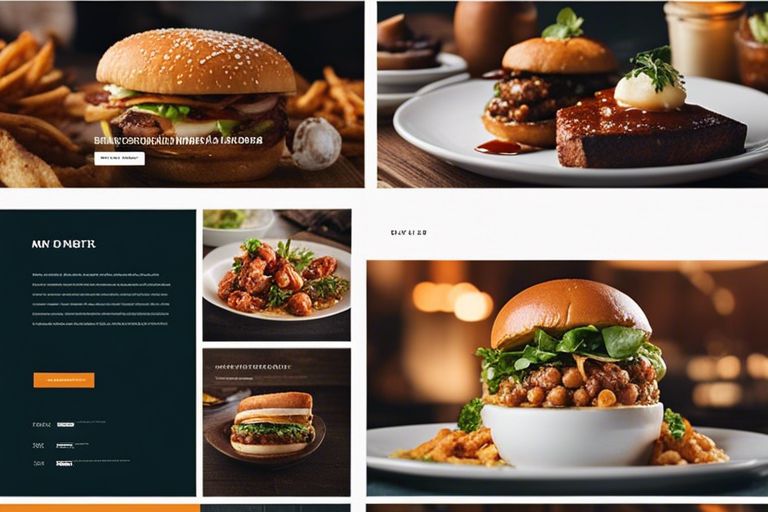
Pros and Cons of Current Design Trends
| Pros | Cons |
| Modern and visually appealing | Potential for lack of originality |
| Responsive design for mobile compatibility | Overemphasis on aesthetics over functionality |
| Enhanced user experience | Design trends can quickly become outdated |
| Improved SEO capabilities | Risk of losing brand identity in a sea of trendy designs |
The Benefit of Keeping Up with the Trends
An effective restaurant website design can significantly impact the success of a business. By keeping up with current design trends, you can ensure that your website remains visually appealing and user-friendly. This can help attract more customers and keep them engaged with your brand.
Potential Drawbacks and Overused Concepts
Assuming the latest design trends can sometimes lead to overused concepts that make your website blend in with others rather than stand out. Drawing inspiration from trends is beneficial, but implementing them without considering the uniqueness of your brand could result in a lack of originality that fails to make a lasting impression.
Drawbacks: Overuse of trendy design elements can make your website look generic and unmemorable. It is crucial to strike a balance between staying current with design trends and maintaining a distinct brand identity to avoid getting lost in the crowd.
Conclusively
By incorporating the latest restaurant website design trends discussed in this guide, you can enhance user experience, boost online visibility, and increase customer engagement. From mobile responsiveness to immersive visuals and storytelling, staying updated with these trends is crucial for the success of your restaurant’s online presence. Remember to always prioritize user-friendly navigation, enticing visuals, and quick loading speeds to create a seamless experience for your website visitors. Keep in mind that trends may evolve, so regularly updating and optimizing your website will help you stay ahead in the competitive restaurant industry. With these insights in mind, you are well-equipped to create a modern and effective website that showcases your unique brand and attracts more customers.
FAQ
Q: Why is it important for restaurants to have a well-designed website?
A: A well-designed website is crucial for restaurants because it serves as their digital storefront, helps attract new customers, and provides imperative information about their menu, location, and services.
Q: What are some current trends in restaurant website design?
A: Some current trends in restaurant website design include mobile responsiveness, interactive menus, online ordering capabilities, high-quality images, and easy-to-use navigation.
Q: How can a restaurant website design impact customer experience?
A: A well-designed restaurant website can enhance customer experience by providing easy access to information, creating a visually appealing presentation of the menu, allowing for online reservations or ordering, and reflecting the restaurant’s brand identity.
Q: What elements should be included in a restaurant website for optimal performance?
A: Key elements that should be included in a restaurant website for optimal performance are a user-friendly interface, high-resolution images of food and ambiance, clear and concise menu presentation, contact information, location map, online reservation or ordering options, and integration with social media platforms.
How can a restaurant keep up with evolving website design trends?
A: To stay current with evolving website design trends, restaurants should regularly review and update their website, seek inspiration from industry leaders, analyze user feedback, monitor competitors’ websites, and consider hiring a professional web designer for guidance and support.

